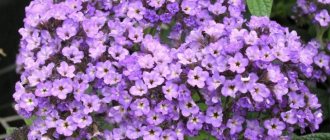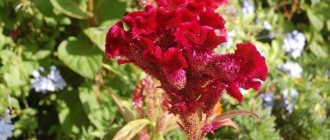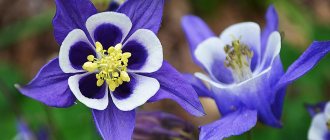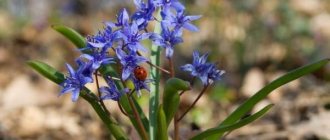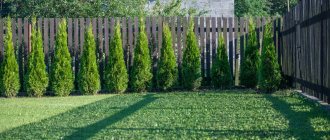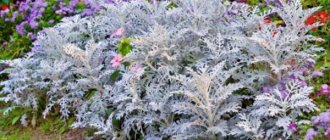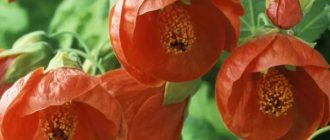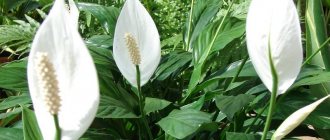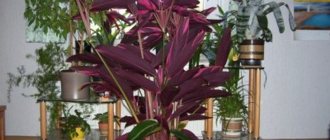Author: Elena N. https://floristics.info/ru/index.php?option=com_contact&view=contact&id=19 Category: Garden plants Published: February 08, 2019Last edits: January 13, 2021
- When to plant
- Growing conditions
- How and when to collect seeds
- Alpine Armeria (Armeria alpina)
Armeria is a flowering perennial with very beautiful inflorescences that form from May until the onset of frost. Armeria is decorated with ridges, it is planted as a border for flower beds and garden paths. Armeria looks good in the vicinity of low-growing and ground cover plants, for example, saxifrage or awl-shaped phlox.
Armeria is often used to make bouquets, including winter ones.
- What types and varieties of Armeria are most in demand in garden culture?
- What is the best way to sow armeria?
- How to care for a plant during the season?
- How to prepare armyia for wintering?
You will get answers to all these questions by reading our article.
Planting and caring for armeria
- Planting: sowing seeds in the ground - before winter or in early March; sowing seeds for seedlings - at the end of February or early March, planting seedlings in the ground - from the second half of May.
- Lighting: bright sunlight, for turfy armeria - partial shade or bright diffused light.
- Soil: moist and light, sandy loam, acidic.
- Watering: moderate, more frequent in dry seasons.
- Fertilizing: before flowering, complete mineral fertilizer.
- Reproduction: seeds, cuttings and dividing the bush.
- Pests: aphids.
- Diseases: spotting.
Read more about growing armeria below.
flowers (Latin: Armeria) form a genus of herbaceous flowering perennial plants of the Vinaceae family, numbering more than ninety species in nature. The name "Armeria" may come from the combination of two Celtic words: "ar", which means "near, nearby", and "mor" - "sea". The validity of this assumption is confirmed by one of the common types of Armeria, which prefers to grow in coastal dunes. But there is also an opinion that “armeria” comes from the word “armoires” - this is the name of the bearded carnation in Old French, with which some types of armeria are similar. Under natural conditions, the Armeria flower is found in Eastern Europe, the Mediterranean, Mongolia, America and Siberia.
- Bathing suit: growing and care in the garden
Using flowers in landscape design
The culture is almost ideal for alpine slides and rock gardens. Wherever there are cracks in the stone in the area, armeria can be planted, and the combination of the gray and coldness of the stone with bright double flowers will always be successful.
Armeria can often surround artificial reservoirs, areas for quiet recreation, and border beds of other crops. In flower beds, the plant successfully coexists with the Carpathian bell and creeping phlox.
Armeria inflorescences on long peduncles, cut before blooming and dried, are used to create winter bouquets of dried flowers.
Photo: using armeria in landscape design - ideas for inspiration
When armeria is densely planted, a carpet is formed, the flowering of which can last from May to September
Armeria looks impressive among ground-blooded plants on lawns along paths
Low lush bushes of armeria also look great as single elements
Armeria goes well with sedums, saxifrage, creeping thyme, low phlox, and jasmine
Various types of armeria are used to border flower beds
Almost all varieties of Armeria take root remarkably well in crevices between stones
The ideal place for planting armeria turf is the eastern slope of an alpine hill, where it will be provided with sufficient shade and good drainage
Armeria is one of the best plants for creating a bright flower border.
Armeria is often planted along the edge of artificial reservoirs
Botanical description
The Armeria plant reaches a height of 15 to 60 cm. It has a short taproot, and numerous linear-lanceolate sessile entire leaves, collected in a basal rosette, form dense clumps - pillows. The stem is straight, smooth or pubescent. Small flowers of white, pink, purple and their shades are collected in capitate inflorescences. The fruit is single-seeded. Armeria flowering begins in May and ends at the end of summer.
The most popular species in culture is the seaside Armeria maritima. Growing seaside armeria is carried out in the same way as growing armeria of any other species, the only difference is that it is preferable for seaside armyia to grow near a reservoir.
Growing Armeria from seeds
How to sow seeds
Seed propagation of Armeria is carried out both by seedlings and without seedlings. Armeria seeds are sown in open ground at the end of autumn (so that they undergo natural stratification over the winter) or in the spring, at the beginning of March. Armeria seeds are sown for seedlings in greenhouses at the end of February or beginning of March. In addition, Armeria reproduces well by self-sowing. Wherever you sow the Armeria seeds - directly into the ground or into a container for seedlings - plant them shallowly, sprinkling them with a half-centimeter layer of soil on top. The germination rate of Armeria seeds is high.
Seedling care
If you want to get healthy shoots, keep the Armeria seeds in the refrigerator for a week, and before sowing, soak them for 6-8 hours in warm water. Armeria seeds sown in boxes and lightly sprinkled with soil are kept in a warm, bright place. When the seedlings reach a height of several centimeters and they have a pair of true leaves, the seedlings dive into greenhouses and grow until they become stronger.
Planting site, soil
The Armeria flower is a perennial flower and loves well-lit areas. The soil should have low or medium acidity.
Attention! The plant does not tolerate drafts and strong winds. There should be no lime in the ground
It will never grow in those areas of the soil where there are elements of deoxidizing drugs. If no other planting site can be found, the effect of the substances can be neutralized by watering the soil with acetic acid dissolved in water.
To achieve the required alkalinity of the soil, you can add acetic acid and ammonium nitrate to it. The ideal landing site is a rocky, sandy loam substrate. If this does not exist in the garden, you can create it yourself. To do this, you need to prepare a mixture of turf, greenhouse soil and river sand, which are mixed in equal parts.
Sowing seeds in open ground
The seed can be sown in the soil at the end of autumn or in the spring (from the first days of March). If seedlings are grown in a greenhouse, the appropriate time for this is February and early March.
The grains are not buried in the soil. They are sprinkled with earth, the layer thickness is 5 mm. There is no need to water the soil heavily; it is recommended to moisten it generously through a spray bottle.
Planting Armeria seedlings in open ground
The method of planting a flower through germinated seedlings is preferable. To increase the likelihood of harvesting, it is recommended to place the grains on a side shelf in the refrigerator a week before planting. Immediately before planting, they must be filled with warm water for 6 hours.
Procuring seedlings and planting them is the best option, which always gives a positive result
The prepared grains are placed in fertile soil, sprinkled with earth and placed in a warm place. The soil should always be kept moist.
When the seedlings have formed 3 full leaves, they can be planted in the soil.
Attention! The seed material is laid out at a distance from each other so that the flowers are not crowded. Planting is carried out in the spring at a time when frost will not return.
The soil is well moistened, with slight acidity. The distance between the bushes is at least 30 cm. If you plan to plant the bushes in a continuous thick carpet, the distance between the holes is 15 cm. The leaves of the flower should not sink into the ground. After lowering the seedling into the hole, it is covered with earth, compacted and watered. For the first 20 days after planting, watering should be regular, but in between, the soil should be allowed to dry out.
Planting is carried out in the spring at a time when frost will not return. The soil is well moistened, with slight acidity. The distance between the bushes is at least 30 cm. If you plan to plant the bushes in a continuous thick carpet, the distance between the holes is 15 cm. The leaves of the flower should not sink into the ground. After lowering the seedling into the hole, it is covered with earth, compacted and watered. For the first 20 days after planting, watering should be regular, but during breaks the soil should be allowed to dry.
Planting armeria in open ground
When to plant
As soon as you are sure that the leaves of the Armeria in the greenhouse have become strong and strong, and the frosts have completely receded, you can start transplanting the seedlings into open ground. Determine the warmest and sunniest area for the armeria with light, slightly moist, acidic soil - sandy or rocky soils are most suitable. If the soil is limed, try to correct this before planting, as Armeria does not tolerate lime. To neutralize, add ammonium nitrate to the soil under digging or spill the area with a solution of acetic acid.
How to plant
Two weeks before planting, thoroughly loosen the soil on the site and apply organic fertilizers. If you decide to grow armeria as solo plants, they are planted in holes at a distance of 30-40 cm from each other and from other plants, placing the seedling in such a way that the rosette of leaves is not lowered into the ground and the root collar is shallow. The holes are filled with earth, the soil is compacted around the seedlings and the planting is watered.
- 2 classic ways to sow petunia seedlings
If you want Armeria to grow in a continuous carpet, then the seedlings need to be planted densely so that there is a distance of no more than 15-20 cm between the specimens, and not in holes, but in shallow trenches.
For the first three weeks, try to water the armeria often, but let the soil dry out between waterings. Armeria from seeds usually blooms the next year after planting. Armeria maritime is grown from seeds according to the same rules as any other species.
Reproduction
Armeria is a perennial. Having planted it once, you can admire the plant for more than one year. In addition to growing from seeds, cuttings and dividing the bush are also used.
Cuttings
The procedure can be carried out throughout the entire growing season. You need to take the root rosettes and sprinkle them with soil. If it's warm outside, they will quickly take root and settle down. If the weather is cool, then the cuttings can be covered with a glass jar, creating a greenhouse.
Dividing the bush
The procedure can be carried out when the armeria reaches 3 years of age. The bush is growing and requires rejuvenation. At the same time, it reproduces. At the beginning of spring or autumn, dig up the bush and divide it into equal parts. Remove damaged roots and stems. Pre-prepare the soil. Dig separate holes for each division. Bury them at a distance of 20-30 cm from each other.
As a rule, flowering with the vegetative method of propagation occurs in the second season. But if you plant a plant in the spring, then a small number of flowers may already appear closer to the autumn of the same year.
Armeria care
Growing conditions
Caring for an army is not difficult. Before it blooms, add complete mineral fertilizer to the soil as a top dressing, and then repeat the top dressing once or twice. Remove faded flowers in a timely manner and cut off flower stalks that no longer bear flowers, so that the plant directs all its energy to the formation of new buds. If the summer turns out to be dry, water the armeria, but try not to overdo it with moisture.
When the plant reaches five years of age, it must be dug up, divided into parts and planted, and then do this every 2-3 years, otherwise the armeria will grow. This is how armeria is planted and cared for. It's simple.
Pests and diseases
Armeria is not afraid of diseases or pests, but if it grows in insufficiently acidic soil, problems with aphids or spotting may arise, which are best dealt with by radical pruning of the shoots.
Protection from pests and diseases
Armeria is very rarely affected by diseases and insects. But if there is excess moisture, the root system may rot and spots may appear on the leaves. In such cases, the bush needs to be dug up, all damaged parts removed, and treated with a fungicide. Transplant the plant to a new location.
Of the pests, aphids pose a danger to armeria. It practically dries out the leaves, causing the plant to die. To avoid this, preventive treatment with insecticides (Kinmiks, Intavir) is carried out at the beginning of summer. If aphids do appear during the summer, the plants must be treated again.
Armeria after flowering
How and when to collect seeds
There is no point in collecting seeds if armeria is already growing on your site - it reproduces well by self-sowing. In addition, an obligatory element of plant care is dividing the rhizomes and planting cuttings, so that you will always have plenty of planting material, and the sowing material sows itself.
If you want to share your armeria with someone, you can give away part of the cuttings when transplanting or cut cuttings. But if you absolutely need to have seeds, tie the fading inflorescence with gauze so that the ripened seeds do not fall to the ground, and when the inflorescence is dry, cut it off, shake the seeds onto a newspaper, clean them from the remains of the flowers and, after drying, pour them into a paper bag.
- Evening primrose (oslinnik): growing in the garden, types
Perennial armeria in winter
Armeria is a frost-resistant plant and can easily survive the winter without shelter, especially if there is a lot of snow in winter. The only exception is the soddy armeria, which must be covered. Dry peat, spruce branches and non-woven materials are used for covering. If, according to forecasts, the winter is expected to be snowless, it is better to cover other types of armeria with spruce branches: they will be warm and you will be at peace.
Types and varieties
About ten types of Armeria have become widespread in culture. They are used in group plantings, ridges, rock gardens, rock gardens, and also as colored borders.
Alpine Armeria (Armeria alpina)
A perennial plant that forms dense cushions up to 30 cm in diameter and about 15 cm in height. Many of the linear-lanceolate leaves survive winter. The flowers are light pink, collected in axillary capitate inflorescences up to three centimeters in diameter. Peduncles up to 30 cm tall. It blooms for three to four weeks from June. Varieties:
- Alba - white armeria;
- Laucheana – armeria with carmine-red flowers;
- Rosea is a variety with bright pink flowers.
Pseudoarmeria, or beautiful armeria (Armeria pseudarmeria)
A plant reaching a height of 40 cm with rosettes of evergreen leaves and inflorescences of white or pink flowers. Blooms from early to late summer. Varieties:
- Joystick White - a variety with white spherical inflorescences, can be grown as an annual;
- Thrift is a low-growing variety with a height of only 20 cm;
- Red Planet is a perennial with red balls of inflorescences on peduncles up to 35 cm tall;
- Bees Ruby is a bright pink armeria up to 60 cm tall.
Armeria maritima
Grows naturally on sea coasts. Its height is no more than 20 cm, the diameter of the rosette is the same. The leaves are narrow, linear, flat, blue-green in color. Flowers in capitate inflorescences are pink-purple, covered with filmy bracts. It blooms in May and fades in about seventy days. Sometimes it blooms again in the fall. Varieties:
- Armeria louisiana is a variety of Armeria maritime with pink flowers;
- Dusseldorf Stolz - variety with dark red flowers;
- Vindictive – red armeria;
- Bloodstone - Armeria dark red.
Soddy Armeria, or juniper-leaved Armeria (Armeria juniperifolia = Armeria cespitosa)
Originating from the highlands of Spain and Portugal, it is a perennial up to 15 cm high with narrow linear leaves collected in a rosette up to 20 cm in diameter. Red or pink flowers in capitate inflorescences are framed by membranous bracts, peduncles up to 6 cm tall. The flowering is so abundant that sometimes the leaves of the Armeria are not visible because of the flowers with bracts. It blooms for forty to fifty days from July. Does not tolerate stagnation of moisture in the roots. A popular hybrid is Armeria turf and Armeria seaside called Armeria Zundermann. Varieties of Armeria turf:
- Brno - a low-growing variety with purple double flowers;
- Bevan's Variety - double flowers, pale pink.
Armeria welwitschii (Armeria welwitschii)
One of the tallest types of Armeria - up to 35 cm in height. The leaves are large, reaching a length of 10 and a width of 5 cm. Pink flowers up to 2 cm in diameter form a capitate inflorescence. Flowering is abundant and long from June until the beginning of winter. This species requires calcium-enriched soil.
Common Armeria, garden (Armeria vulgaris)
Grows in height up to 60 cm, linear, entire leaves reach 12.5 cm in length and 1 cm in width. The bare peduncles are crowned with capitate inflorescences of carmine-pink fragrant flowers, of which there can be up to 40 on one plant.
Beautiful Armeria (Armeria formosa)
Forms compact rosettes of narrow-linear evergreen leaves. Stems are rigid, rounded, erect. Inflorescences up to 5 cm in diameter, white, red or pink, bloom profusely until October.
In addition to the listed types of Armeria, Japanese, Siberian, spiny, bulbous, Arctic and others are also known.

